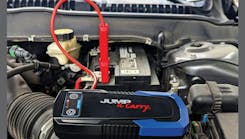3 tips for choosing lightweight PPE to help keep workers cool
While August may seem like the end of summer, it is likely we’ll continue to see temperatures climb above normal for at least a few more weeks. According to the National Centers for Environmental Information, 2021 was the warmest summer on record since 1936. This year, the US has seen little relief as record heat waves affect the entire country.
Many Americans suffer from the summer heat, but the industrial workforce is often at particular risk. The Bureau of Labor Statistics reports that over 4,000 United States workers are seriously injured or die from heat stress every year. Many of these laborers work in direct sunlight, with no air-conditioning, and/or with multiple heat stressors. In response to these trends, the Occupational Safety and Health Administration (OSHA) launched a targeted Heat Stress National Enforcement Program (NEP) this year to help protect workers across the nation from the increasing threat of heat-related illness.
Heat safety programs often include multiple measures to protect workers such as providing hydration stations and places for shaded breaks. Choosing lightweight PPE can be a vital but sometimes complicated step in these programs. Nevertheless, when correctly chosen, it can also help workers stay comfortable and productive year-round.
How should safety managers make sure they are choosing the best lightweight PPE that will still protect for their applications? Here are 3 Tips from Safety Experts at Magid
1. Determine the ANSI Cut, Abrasion, and Puncture Resistance Levels required, then search for lightweight products
Never sacrifice protection for comfort. First, determine the necessary ANSI Cut, Abrasion, and Puncture Resistance Levels needed to keep workers safe. Next, search for products that meet those levels and are composed of materials that keep products lightweight such as Hyperon, HPPE, or low-profile TPR.
Magid offers an innovative technology called AeroDex which is 50 percent lighter than HPPE of the same cut level and available in gloves, sleeves, and protective clothing. When initially wear-testing, it may be hard to believe such cool and comfortable PPE can offer the same cut resistance that heavier PPE provides, but innovations in PPE material technology have changed the game in recent years!
2) Choose vented PPE for hazard-facing protection
Some applications require heavier protection than others, but that doesn’t necessarily mean that workers need to be covered head-to-toe in thick gear. For example, where molten metal work is prevalent, workers might consider aluminized chaps which will keep the backs of the legs cooler. Even PPE such as impact gloves can offer heat-releasing features. Magid’s TREX Windstorm Series has a CoolMesh venting system that enhances airflow up to 60 percent compared to traditional impact gloves.
3) Look for long-lasting cooling gear that can be reactivated on the job
With so many cooling gear options on the market, be sure to look for a solution that’s portable and convenient that your workers can use outside of break time. New technologies in cooling gear like Magid Cool powered by Mission products are portable, can be activated with any temperature of water, cool in seconds to 30 degrees below the average body temperature, and stay cool for up to two hours. Because this gear is chemical-free and machine washable, workers can reuse and reactivate it over and over again.
It’s also important to make sure cooling garments are appropriate for the work application. For example, someone working with machinery may not be able to use an item such as a cooling towel as it can get caught and lead to serious injury. In this case, search for cooling products available in various styles like neck gaiters, skull caps, or bandanas.
Reprinted with permission from Magid.



